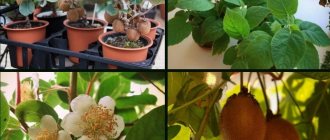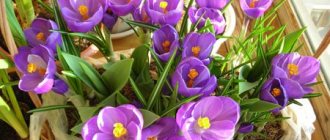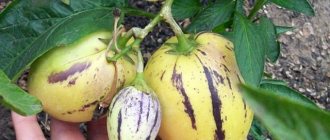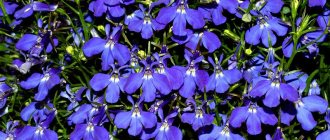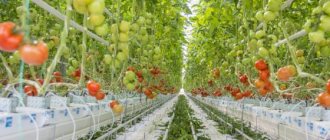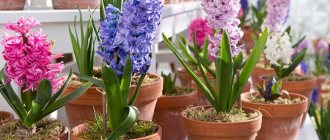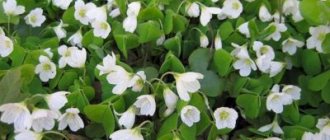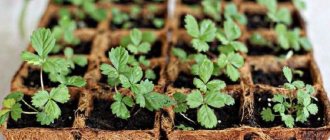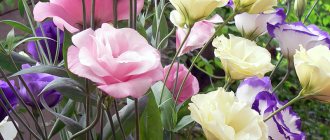Kiwi is a herbaceous vine whose fruits have juicy green flesh and brown skin with fine hairs. This amazing exotic fruit is called Chinese gooseberry, which today can be found not only on supermarket shelves, but also in pots on windowsills and in the garden of ordinary summer residents.
Kiwi is native to Italy and New Zealand, but it also grows and bears fruit well in Russia.
Characteristic
Kiwi, a fruit, grows primarily in tropical or subtropical climates. But creating an optimal microclimate for its growth is not difficult. The main thing to remember is that for fruiting to occur, you need to have two copies of the plant - male and female, because the plant is part of the dioecious group.
Distinguish between the two types of plants during their flowering period: the male has no pistil, but many stamens. One such plant can pollinate up to 6 females.
There are more than 50 types of kiwi in nature, but for growing on a windowsill and in the Russian microclimate, the following varieties are suitable:
| Variety | Description |
| Hayward | This variety has large fruits and requires a lot of space to grow properly. It needs to organize a subtropical microclimate, then in the middle of the last month of spring it will bloom profusely. There must be a pollinator variety nearby; this is the only way the fruits will appear. The dark, medium-sized foliage is smooth on top and rough on the bottom. The fruits weigh up to 150 g, are oval, slightly flattened on the sides. |
| Bruno | The variety will give a good harvest in subtropical climates. The leaves are oblong, pointed and slightly concave in the middle. The variety is not capable of self-pollinating. It begins to bloom in mid-May. The fruits are oval, slightly elongated, weighing up to 70 g. |
| Monty | The variety is distinguished by small but juicy fruits. The leaves are large, rich green. The trees are strong and do not require constant pruning. Does not self-pollinate. The tree begins to bloom in the first ten days of May, the fruits are small. |
| Abbott | This species is different in that the fruits will be tasteless if there are a lot of them on the tree. You need to thin out the harvest yourself, removing half the fruits. The variety requires high humidity in the soil and around the plant itself. Pruning is required as the variety is fast growing. Cannot pollinate on its own. The fruits are medium-sized, weighing up to 70 g, and have the shape of a pear. |
| Allison | This variety has a high yield, grows quickly and requires regular pruning. The fruits are bell-shaped with dark skin and small hairs on it. The average fruit weight is 45 g. |
| Matua | This is a male type. It does not bear fruit, but provides fruit on female plants. This species is a pollinator. The inflorescences are small - up to 7 flowers. Flowering lasts about 2 weeks. After flowering, a peduncle remains, making the plant difficult to confuse with any other. |
| Tomuri | This is another pollinator variety. It is as tall as possible and as blooming as possible. By providing him with proper care, he will be able to fertilize up to 6 trees. |
If you plan to plant kiwi in your summer cottage, then it is better to choose one of the frost-resistant varieties:
- Kolomikta. This variety can withstand frost down to -30 degrees. It grows in the form of a vine, it requires support so that it can curl around it; you can form a crown in the shape of a small bush.
- Arguta. This variety is distinguished by its large size - the trunk length can reach 25 meters.
- Polygamous. This variety is considered one of the most valuable, as its fruits contain a large amount of vitamin C.
- Carpathian Straton Valentine. This is one of the newest frost-resistant varieties, which was bred by a breeder from Ukraine several years ago.
Kiwi - actinidia chinensis
Kiwi is the commercial name for the fruit of Actinidia sinensis, a member of the Actinidiaceae family. In the wild, this large woody vine with leaves that fall off in winter grows in the subtropical forests of southern China. In nature, Actinidia chinensis vines reach 10 meters in length, climbing high into the crowns of trees.
The large, wide leaves of kiwi look very unusual and attractive. This vine provides a lot of shade and is good for landscaping yard sheds, pergolas and gazebos in the southern zone.
Kiwi is a deciduous vine with large leaves.
The kiwi fruit is a juicy berry, covered with a slightly hairy brownish skin, under which lies a tasty and aromatic pulp. The skin is rough and is not used for food; only the pulp of the fruit is edible. Kiwi seeds are very small and numerous; they are not felt when eaten, so there is no need to remove them when peeling this fruit. The fruits are oval in shape, slightly larger in size than a chicken egg, weighing up to 100–150 grams.
Kiwi fruits are slightly larger than a chicken egg.
The pulp of kiwi fruits is a beautiful bright green color; in most varieties it remains green even when fully ripe, although recently varieties with yellow flesh have begun to appear. It is very easy to distinguish a ripe fruit from an unripe one:
- unripe fruit is hard to the touch,
- the ripened fruit becomes soft, and its flesh becomes transparent.
For long-term storage of many months and transportation over long distances, kiwi fruits are collected slightly unripe, while they are still hard. Fully ripened soft fruits last only a few days, even in the refrigerator.
In order for purchased hard kiwi fruits to ripen faster, they should be placed in a plastic bag along with several ripe apples, the bag should be tied and left for 3–5 days in the shade at room temperature.
Kiwi is an important commercial fruit crop in subtropical countries
Actinidia chinensis has been grown since ancient times in the gardens of China and neighboring countries of Southeast Asia, where many local varieties have been created. But this fruit crop gained global commercial importance and international popularity only in the last century, when old Chinese varieties were brought to New Zealand. The exotic eastern liana has taken root well on New Zealand soil, and breeders there have managed to create varieties with especially large fruits, for the promotion of which to the world market the commercial name “kiwi” was invented (in honor of the unique flightless bird, which is a universally recognized symbol of New Zealand).
Modern large-fruited varieties of Actinidia chinensis are often isolated into a separate species - Actinidia deliciosa, in order to distinguish them from their wild ancestors.
Large-fruited kiwi varieties (photo gallery)
kiwi Abbot
kiwi Bruno
kiwi kivaldi
kiwi Monty
Kiwi Hayward
kiwi Allison
Main characteristics of large-fruited kiwi varieties (table)
| Name | Ripening period | Fruit size |
| Hayward | Late ripening | 80–150 g |
| Kivaldi | Late ripening | 75–100 g |
| Monty | Mid-season | 50–80 g |
| Abbott | Mid-season | 45–65 g |
| Bruno | Early ripening | 50–70 g |
| Allison | Early ripening | 40–60 g |
Regions of industrial kiwi culture
Currently, kiwi is the most important commercial fruit crop in New Zealand, in the subtropical zone of the USA and the countries of South America, in China, Japan, and in many countries of Southern Europe.
A lot of kiwi fruits are now grown in Italy. I had the opportunity to talk with several Italian farmers, owners of such plantations. In their opinion, the kiwi crop is less troublesome and more profitable compared to the traditional grapes of those places: kiwi has practically no pests and diseases, so labor-intensive treatments with pesticides are not needed at all, the harvest is guaranteed to be environmentally friendly and is stored much longer. For planting kiwi, just like for vineyards, you can use inconvenient areas in the foothills and on the slopes of hills, and the design of the supports is not very different from that of grapevines.
Kiwi plantations in many countries are successfully replacing vineyards
Kiwi also grows well in the southern part of Russia: on the Black Sea coast of the Caucasus, in Crimea, in the south of Dagestan. On the southern coast of Crimea, in Sochi and Krasnodar, kiwi successfully winters without shelter; in more northern regions, vines must be removed from their supports for the winter, laid on the ground and covered.
How kiwi grows in Yalta (video)
You can also grow kiwi in the Black Sea regions of Ukraine. Successfully fruiting amateur plantings of this vine also exist in Transcarpathia. In Kyiv, actinidia chinensis sometimes bears fruit in some especially successful years, but in frosty winters it freezes significantly. In Belarus and central Russia, growing kiwi is possible only in greenhouse conditions.
Preparation of planting material
Kiwi is grown at home from seeds, cuttings or root layering.
Propagation by seeds
The fruit will need to be found in the store; it must be as ripe as possible without signs of rot, mold or pest damage. Seeds should be sown immediately after collection and it is better to do this in early spring. A ripe fruit can be identified by its pronounced aroma. Each fruit contains about 1000 seeds.
The photo shows step by step the process of growing kiwi from fruit seeds.
Prepare seeds for planting according to the following algorithm:
- The fruit should be thoroughly washed and cut into several parts. Peel off the skin, place the pulp in a plate and mash thoroughly with a fork.
- Transfer the resulting fruit puree into a deep container and fill with water. Using your fingers, separate the seeds from the pulp. To remove the pulp completely, the water will have to be changed at least 5 times. As a result, only small black seeds should remain in the container.
- You can simply transfer the fruit puree into a sieve covered with gauze and rinse the seeds under running water.
- Place the seeds on a paper towel and allow them time to dry. After a few hours, the seeds will dry out, changing color from black to grayish brown.
- Soak a piece of gauze in a solution of potassium permanganate to disinfect the planting material. You can also soak gauze with a growth stimulator (Zircon, aloe juice, Kornevin).
- Wrap the seeds in wet gauze, place in a saucer and cover with a piece of polyethylene on top. At night, the cover is removed, and in the morning the gauze is moistened and the container is again covered with polyethylene.
- After 7-10 days, the seeds will germinate and can be planted.
Propagation by cuttings
Green cuttings are one of the best methods of kiwi propagation, which provides a high yield of material for planting. Cold greenhouses or greenhouses made of film are used for it.
Step-by-step installation of greenhouses on a personal plot:
- Dig a trench up to half a meter deep.
- Pour drainage material onto the bottom: crushed granite, expanded clay or coarse river sand. Layer thickness is about 15 cm.
- Place 4 cm of sawdust on top.
- And then completely, leaving only 3 cm, fill the trench with a soil mixture consisting of peat, sand and humus in a ratio of 1: 1: 0.5.
- The last layer is the rooting substrate, coarse sand and peat (2:1).
Cuttings are harvested in late June early July. Annual shoots are cut, the grassy top is removed: the lower cut is 2-5 mm below the bud, the upper cut is 2-5 mm above. The lower foliage is removed and the upper foliage is cut off by two thirds.
The finished cuttings are planted in a greenhouse, having previously been treated with a growth stimulator. The cuttings are buried 4 cm into the soil, compacting the soil around them. 10 days after planting the green cuttings, roots begin to form, and after 20 days the root system is already fully formed.
Propagation by lignified cuttings
Shoots for propagation should be harvested in late autumn - early winter. Annual shoots are cut, lowered into the basement and stored until spring in moistened sand; the optimal room temperature should be between 0-5 degrees. You can also wrap them in polyethylene bags and store them in the freezer at 0-2°C.
In early spring, cuttings are cut 20 cm long with 3-4 buds and rooted in greenhouses or greenhouses. In April, the cuttings are planted in open ground at a slight slope, leaving only 1 bud on the surface.
Reproduction by root layering
Many gardeners use this particular method of propagating vines on their site.
The algorithm of actions is as follows:
- In early spring, a ditch up to 10 cm deep is dug at the base of the tree. Afterwards, it should be filled with humus, ash and peat chips.
- Take a one-year-old shoot and tilt it towards the ground in the shape of an arc and pin it with a hook, the top should be located on the surface, pinch it.
- Fill the ditch with fertile soil.
- Always ensure that the soil is moist and loose.
- As the sprout grows, the soil layer is increased.
- In the fall, roots will appear where the shoot is pinned.
- After a year in the fall, the cuttings can be replanted.
Pruning Recommendations
The kiwi liana is characterized by its growth rate, so pruning is a mandatory procedure for it. Such plants look much more aesthetically pleasing and neater, and bear fruit more abundantly. If the growth of the vine is not limited in any way, it can stretch up to 7–10 m in length. It is absolutely impossible to keep such a plant in an apartment.
For seedlings that have grown to a height of 25–30 cm, pinch the top, removing the last 2–3 buds. This stimulates the plant to branch more intensively. But an excess of green mass is also harmful to the plant - all its strength goes into feeding it, so the fruits do not set at all or fall off long before ripening.
An adult kiwi plant at home should consist of 5–7 shoots, starting at a distance of approximately 45–50 cm from the base of the stem. They constantly form dense growth, which will have to be shortened throughout the growing season. It is not advisable to preserve it, since only the lower 5–6 “eyes” of each annual shoot bear fruit.
There is no point in leaving very long shoots on a kiwi vine: only the lower 5–6 buds bear fruit
Old branches are gradually removed, replacing them with replacement shoots. Typically, kiwi needs rejuvenating pruning every 5–6 years. If carried out correctly, the productive life of the vine extends to 40–50 years.
Pruning is especially important when there are several plants located next to each other. If it is not carried out, one of them may simply “strangle” the neighbors. Also, removing excess foliage and weak shoots improves air exchange in the crown, minimizing the risk of the spread of diseases and pest attacks.
A different method of formation is more often used when growing vines outdoors, but such plants also look nice at home.
- An annual seedling is shortened to a height of 30 cm.
- After another year, all formed side shoots, except two (the so-called shoulders), are cut off to the growth point.
- When they reach a length of 1 m, their tops are pinched. From all the growth formed on the “shoulders”, 3–4 lateral branches are left, located at approximately equal distances from each other. They are shortened by cutting off after the fifth or sixth bud.
- During the active growing season, all growth on these branches and new side shoots on the “shoulders” are immediately removed.
- After harvesting, the fruiting shoots are pinched so that 6–7 new leaves remain above the last berry. Branches on which there were no fruits are shortened to the fifth leaf bud.
- At the age of three years, branches are pruned to the point of growth. Soon a new shoot will begin to form from it, which is pinched after five leaves have formed on it.
Secateurs, like any other tool used for pruning kiwi, must be sharpened and disinfected
A very neglected or old kiwi vine can be rejuvenated by radical pruning in the spring. Unlike most indoor plants, kiwi responds normally to the loss of a significant part of the green mass, quickly recovering and starting to grow after such “stress”.
Preparing the soil and planting site
The roots of kiwi are very developed, grow greatly in width, and are fibrous at the surface. Therefore, a salad bowl or shallow bowl is suitable for planting. The main thing is to organize drainage holes. It is better to take a container for planting from natural ceramics, because it allows air to pass through better, preventing moisture stagnation.
Kiwi fruit grows well in light, loose and nutritious soil. A mixture of coarse river sand, peat chips and black soil in a ratio of 2:1:3 is ideal. You can add about 10 g of wood ash, but first sift it and egg shell powder for each liter of finished substrate.
You can also prepare another mixture: perlite, peat and humus, each in equal quantities. You can purchase ready-made soil designed specifically for tropical vines.
To plant vines in the garden you need to choose the right place. The tree will not take root well in a place where groundwater lies close to the surface. The soil should be loose and fertile. Kiwi will feel good next to a support, a fence can serve as it. In the first years after planting, the plant will not tolerate direct sunlight and strong winds.
What is mini kiwi
In recent years, many garden nurseries have been using the name “mini-kiwi” to increase consumer demand for seedlings of other species of actinidia:
- actinidia arguta,
- actinidia purpurea,
- Actinidia kolomikta.
Compared to actinidia chinensis, these species are much more winter-hardy, especially actinidia kolomikta, which grows and bears fruit without any shelter even in the Moscow region, in Siberia and the Urals. Their fruits are much smaller in size than those of kiwi, but they are in no way inferior to them in taste and in the content of nutrients.
Varieties of mini-kiwi (photo gallery)
Mini-kiwi is the commercial name for small-fruited actinidia species.
Actinidia arguta is the largest-fruited mini-kiwi
Actinidia purpurea has unusual brightly colored fruits
Actinidia kolomikta - the most winter-hardy of the mini-kiwis
In my garden in the Middle Volga, the liana Actinidia kolomikta has been bearing fruit for many years, annually at the end of August producing a harvest of small berries the size of grapes, with a taste and aroma like real store-bought kiwis.
Landing algorithm
Kiwis should be planted in open ground at a distance of 5 meters from one another, in rows with a step of 5 meters. Planting is best done in late autumn or early spring, when the air temperature varies within +5°C.
To plant a plant in open ground, do the following:
- dig landing grooves up to 70 cm deep;
- add a nutrient mixture to each groove: up to 10 kg of humus and 200 g of superphosphate;
- Don’t forget to put drainage at the bottom of the groove - large expanded clay or broken brick;
- before planting, soak the roots of the plants in a clay mash;
- planted 3 cm below the root collar;
- water generously – up to 3 buckets for each plant;
- mulch the soil with compost, peat or rotted sawdust.
It is necessary to plant female and male plants - for every 10 female plants there is 1 male plant. After planting, install plant supports.
It is better to plant the plant at home in pots in early spring using sprouted seeds. Having prepared a pot with soil mixture, you need to place up to 4 sprouted seeds in it to a depth of 5 mm and sprinkle with soil without compacting, otherwise it will be difficult for the seeds to break through.
Air temperature
If the tips of the Cordyline kiwi leaves dry out, then most likely the plant is in a room with the wrong air temperature. This culture prefers moderate heat. It is best to keep the flower in a room where the air temperature is from 18 to 23 degrees. This green pet does not tolerate sudden changes in temperature, as well as strong drafts.
In summer and late spring, it is recommended to take the pot out onto the loggia or balcony, but at night it must be brought indoors. The slightest frost will destroy the plant.
If the cordilina is placed on a windowsill, it must be protected from cold air during ventilation. If you open a window or window, it is best to remove the crop from the windowsill at this time.
Home care
Caring for kiwi includes: regular watering, fertilizing, and crown formation. If you provide the plant with proper care, it will bear fruit for up to 40 years, increasing its yield every year.
Spraying and watering
Kiwi, a fruit, grows in well-moistened soil, but do not overdo it - high humidity can lead to rotting of the roots.
In summer, it is recommended to water up to 3 times a week, and in winter - no more than 1 time in 2 weeks. In hot weather, spraying is also added to watering, carried out using a spray bottle. Spray the plant both in the pot and in the garden.
Top dressing
Already in early spring, after planting the plant in the ground or pot, you can begin to fertilize. It is applied twice a month, from spring to late autumn. Feeding should be alternated - mineral supplements and organic matter.
There should be a minimum of three feedings:
- during the growing season - this is the month of March;
- after the end of frost - May;
- upon completion of fetal formation.
The best fertilizer for kiwi is considered to be vermicompost or compost. You can make a small trench next to the plant and place fertilizer in it. During watering, food will slowly reach the roots along with moisture.
Kiwi roots are shallow, so any weeding or digging near the trunk can cause serious damage to them. Therefore, it is recommended to carry out mulching.
Trimming
A palmette in 1 or 2 tiers is considered a successful form for growing kiwi. To create a 1-tier palmette at a height of 1 meter, two sleeves are formed along a rope stretched between the posts, and for a 2-tier palmette at a height of 2 meters, 2 more sleeves are formed.
After planting, the strongest young shoots should be left and tied to a support, and the rest should be cut out. If planting was carried out in early spring, then pruning is carried out only after the leaves bloom. When the shoot grows to the first tier, it is cut off, pushing the side ones to grow, and from them 2 sleeves will be formed.
In the spring, only dry branches are removed; after cutting a living branch, you can watch it “cry” for a long time. In summer or autumn, weak shoots that have already given off fruit or thickening shoots are removed, leaving only those that grow horizontally at a distance of 30 cm.
Tying up
Kiwi, a fruit, grows very quickly. In order for the plant to develop well, it is necessary to install special poles immediately after planting, between which a rope or wire is pulled.
Topping
It is sometimes necessary to pinch the top of the plant to stimulate the growth of side shoots. Thanks to pinching, it is possible to make the plant stronger and more resilient.
Transfer
When the roots of a houseplant in a pot entwine the entire earthen ball, transshipment is performed. The root system of kiwi is delicate, so transplantation is carried out as carefully as possible.
Optimal conditions
Kiwi, a fruit, grows well in summer if the air temperature varies between 20-26°C. The shrub does not tolerate sudden changes in temperature and drafts. In winter, the plant becomes dormant and the leaves fall off, so the indoor plant is moved to a cool room.
Kiwi growing in the garden does not need to be wrapped for the winter, the main thing is to carefully insulate the root system using humus and peat.
Kiwi prefers bright, diffused lighting. During the hot season, the plant is shaded from direct sunlight, especially if the plant has been watered before. In winter, the plant does not have enough light, so additional lighting is required for up to 14 hours.
In hot weather, the plant requires misting to maintain optimal humidity levels. To increase the humidity level, the indoor plant is placed in a tray with wet expanded clay.
Origin story
It is generally accepted that the first varieties of kiwi were bred and cultivated in China, where this plant was called yang tao (translated from Chinese as strawberry peach). Later, Europeans began to call kiwi "Chinese gooseberry", and this berry began to be in demand around the world.
In order for the fruit to become more in demand on the market, New Zealand producers in 1962 came up with a more attractive name for it, which is assigned to it to this day - kiwi. The producers borrowed the new name from the flightless bird kiwi, which bears a vague resemblance in shape and color to this fruit.
In scientific circles, kiwi is called actinidia. It is quite sensitive to temperature and climate conditions. Even the most insignificant deviations from the temperature norm required by the plant are enough to reduce the level of its flowering, and this entails the destruction of the fruits and the death of the entire plant.
Since kiwi is a rather fastidious plant, the branches of which react very sharply to environmental conditions, many attempts to grow this fruit in different areas and climatic conditions did not bring positive results. On the contrary, producers wishing to grow kiwi suffered significant losses.
Despite the fact that the birthplace of actinidia is Northern China and the coast of Eastern China, where it has been cultivated for three centuries, this fruit has not received much popularity or demand there. This is explained by the limited amount of territory that is suitable for growing the plant on a large scale and the population density on suitable lands. Not so long ago, the actinidia vine was quite common in the natural wild environment; it climbed unhindered through wild trees.
Possible diseases and pests, ways to get rid of them
During a period of prolonged drought, kiwi growing in a garden plot is attacked by caterpillars and spider mites, which feed on the sap of the leaves and spoil the appearance of the fruit. You can fight them with insecticides.
The vine is also often affected by powdery mildew and anthracnose. To protect the plant from diseases, it is recommended to periodically treat the plants with the following preparations: Radomil, Switch, Horus.
Also, the plant is often damaged by soil pests, such as the cockchafer and cutworm. They cause irreparable damage to the root system. To protect the plant, the soil in the root area is watered with Aktara solution. To eliminate weeds, it is recommended to use a herbicide like Roundup.
Preventive measures will help protect the plant from diseases and pests, so each plant should be inspected regularly and, at the first sign, urgently treated with the necessary solutions.
How to choose
When purchasing, you need to pay a lot of attention to the appearance. Stale berries lose their valuable qualities; eating them is useless, and sometimes even dangerous. If the peel is damaged or the fruit begins to rot, toxic substances appear in it. Eating them can cause food poisoning. Signs of rot include dark spots, dented areas, and wrinkled skin. Fresh kiwi is determined by the following indicators:
- Smooth surface with pure shade.
- No cracks or dents.
- Pleasant light aroma.
- The stalk is dry.
- The fruit is elastic to the touch (about like a tomato).
It is better to choose a kiwi that is a little firm rather than too soft. The berries that have not had time to ripen will ripen at home in a few days. They need to be placed in a sunny place (on a table, windowsill). Ripe ones are stored in the refrigerator for 3-4 weeks.
Peculiarities
Kiwi is a healthy fruit that can decorate any windowsill and garden with its appearance.
Growing it has a lot of advantages:
- there are many varieties of plants;
- frost-resistant varieties have been bred;
- Possibility of growing in gardens and pots.
Among the disadvantages are the following:
- lack of moisture can cause foliage to fall;
- lack of lighting thins the stems and causes the foliage to turn pale;
- lack of nutrition provokes the appearance of yellow leaves;
- The plant is at risk from low temperatures in the spring - at -8 degrees the buds die.
Kiwi fruit is a healthy and tasty fruit that can easily be grown at home on a windowsill or in the garden. The main thing is to organize regular watering, adding nutrients, and already in the third year after planting it will be possible to harvest the first harvest. The plant grows beautifully, entwining the support, decorating the window and garden with its appearance.
Contraindications
Eating kiwi has some restrictions. You should not overuse the delicious berry. It has a laxative effect. It is also contraindicated in the following situations:
• Having an allergy to citrus fruits. Often in this case the same reactions appear to Chinese gooseberries; • If you have diarrhea, eating fruits can lead to dehydration; • In case of exacerbation of a stomach or intestinal ulcer, the disease may worsen.
Strawberry peach is harmless for pregnant women. It will have a positive effect on the health of the expectant mother and baby. It is not recommended to give it to children under one year old. It is difficult for their body to digest unfamiliar foods. At an older age, the benefits of kiwi are unconditional.
Popularization of the fruit
Today, the country that is engaged in the mass cultivation of kiwi and has the largest plantations in the world is New Zealand.
It is there that the fruits that account for most of the world's exports of this product are grown. The main place for plantations is the Bay of Plenty, North Island, since it is there that the climatic conditions are most suitable for the comfortable existence of actinidia. More than 2,500 special farms are engaged in growing kiwi in this country, and the supply of their products is distributed throughout the world. In New Zealand, kiwi production is also widespread in other countries, but on a smaller scale, intended exclusively for the domestic market.
Large production facilities are located in:
South Korea also grows kiwi, but in small quantities, about three thousand tons per year, which are intended exclusively for the local population of the country. As for growing kiwi in America, this country cannot boast of any particular success.
Despite the unfavorable climate for actinidia, many American farms expressed a desire to grow this fruit, and not only for domestic distribution, but also for mass export. However, all attempts ended in the bankruptcy of farmers, since they were unable to create conditions similar to how kiwi grows in nature. The only states whose climate is relatively suitable for this plant are California and Hawaii.
Reviews
Kiwi is a perennial plant that requires cool wintering.
Odina https://forum.homecitrus.ru/topic/56-kivi-aktinidiia-kitajskaia-doma-i-na-balkone/
Kiwi already begins to freeze at minus 10.
Marusya https://forum.homecitrus.ru/topic/21374-vyraschivaem-kivi-aktinidiiu-kitajskuiu-v-otkryto/
I cover it the same way as grapes... I haven’t noticed any difference in the winter hardiness of grapes and kiwi. The only negative is that kiwi wakes up a little earlier than grapes, which means the likelihood of getting frost is much higher.
Alexey Sh https://forum.vinograd.info/showthread.php?t=3289
Actinidia chinensis is a real kiwi! In the Kiev Botanical Institute it grows, and sometimes even bears fruit.
Sveta2609 https://www.forumhouse.ru/threads/125485/
Kiwi is a very promising fruit crop for regions with a mild subtropical climate. In slightly more northern areas like the Black Earth Region, sheltering for the winter will help protect vines from frost. And in central Russia, where kiwi does not overwinter even under careful shelter, other types of actinidia grow well with high winter hardiness and fruits that are slightly smaller than those of real kiwi, but no less tasty and healthy.
Mr. Summer Resident recommends: Cordilina – tree of luck
The plant helps maintain a warm atmosphere in the home and suppresses negative energy. It is recommended to place the bush in a room where guests constantly visit, since even the most friendly person unwittingly violates the established biofield parameters. The magic of cordilina is that it allows you to maintain a seamless homely atmosphere, eliminating the imprint of strangers. Even those owners who do not take superstition seriously note that after long gatherings they no longer feel tired.
The plant purifies the air well and improves concentration, so it is simply necessary if school-age children or adults with complex mental work live in the house.
